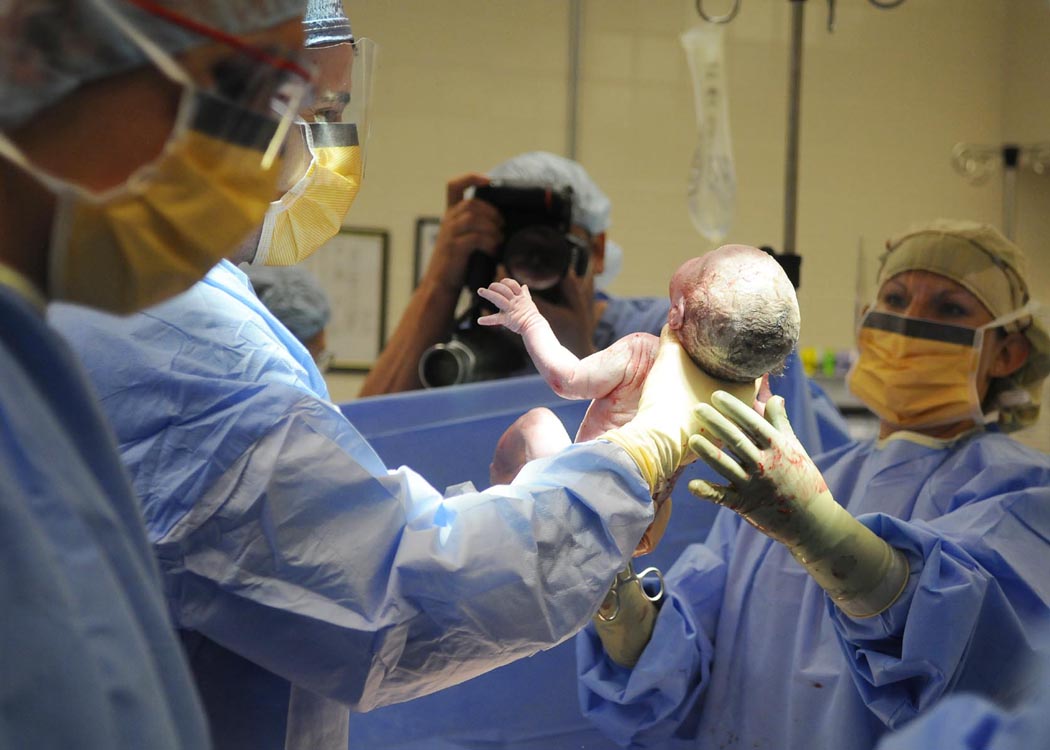VitalTrace is working to improve the safety of mothers and babies during childbirth, some of our most vulnerable and youngest patients.
At the core of labour is a mother, her baby, her obstetrician or midwife, and the hospital system. Success is measured by a safely delivered baby. Monitoring the baby’s status during the labour progression is standard practice, and the current system hasn’t changed in over 60 years. Cardiotocography (CTG) monitors the baby’s heart rate and the mother’s uterine contractions to create a continuous readout.

CTG devices consist of external sensors belted around the mother, intruding on what is hoped to be a natural birth experience. 90% of mothers are routinely monitored electronically via a device such as this. In 30% of patients, an additional electrode is directly applied to the baby’s scalp to directly track its heart rate when a CTG isn’t providing a clear readout.
A key flaw in this widely used technique is that CTG interpretation is fundamentally subjective. In some traces, the baby’s heart rate clearly indicates that it is in no distress, and labour can proceed with vaginal natural delivery. At the opposite end, foetal heart rate rhythm is abnormal to such an extent that doctors are confident the baby is in trouble. These babies are delivered via emergency caesarean section (C-section).
However, up to 84% of CTG traces fall somewhere in between and are not conclusive (Category II traces). Interpretation is left to the doctor’s discretion, and doctors are increasingly opting for emergency C-sections rather than risk vaginal delivery. In recent years, the rate of C-section delivery in Australia has been increasing, with 36% of all women giving birth via C-section.
Alarmingly, CTG monitoring has a 70% false positive rate, so emergency C-sections are performed on thousands of healthy mothers and babies. With a 300% greater risk of maternal death because of unnecessary C-sections, inaccurate readings can carry large consequences.
Reliable information about foetal blood oxygenation is possible through a laboratory diagnostic: a time-intensive, invasive test for lactate levels in a blood sample taken from the baby’s head. Lactic acid is produced by tissues when there is insufficient oxygen available; therefore, blood lactate level is an objective indicator of foetal status. High lactate levels mean the baby is in true distress. However, the diagnostic test takes 20-30 minutes to complete, during which time a labour situation can change dramatically. In addition, foetal scalp lactate testing is not a widely available diagnostic tool.
CTG continuously monitors labour but is highly inaccurate; foetal blood lactate testing is accurate but not continuous. A critical unmet need is the lack of real-time, reliable data about babies’ oxygenation and wellbeing during childbirth.
Taking inspiration from real-time diabetic glucose monitoring devices, the Perth-based company VitalTrace has developed a revolutionary wearable device that continuously and accurately measures the baby’s lactate levels while preserving the natural flow of labour. Its novel sensor goes on the baby’s scalp and continuously measures oxygen and lactate. The sensor is connected to a small wearable electronic unit on the mother’s leg, and real-time data is transmitted wirelessly to a bedside monitor.
When Dr Michael Challenor and Dr Arjun Kaushik launched VitalTrace in 2020, their brilliant idea needed logistical and fabrication support to make their vision a reality. Their biosensors need to be manufactured and fabricated under sterile conditions – but cleanroom and fabrication equipment are not widely available in Perth. Partnering with ANFF-WA and Prof. Sharath Sriram at RMIT University, VitalTrace’s technology is now being scaled up as a fit-for-purpose device to be manufactured in Australia for a global market.
VitalTrace has completed pre-submission meetings with both the US FDA and the AUS TGA. The FDA is evaluating its DelivAssure device through its breakthrough designation programme (BDP), recognising that getting VitalTrace’s ingenious device successfully to market will have a major impact on birthing mothers and their babies and may eventually replace CTG as the standard of care for labour monitoring.
